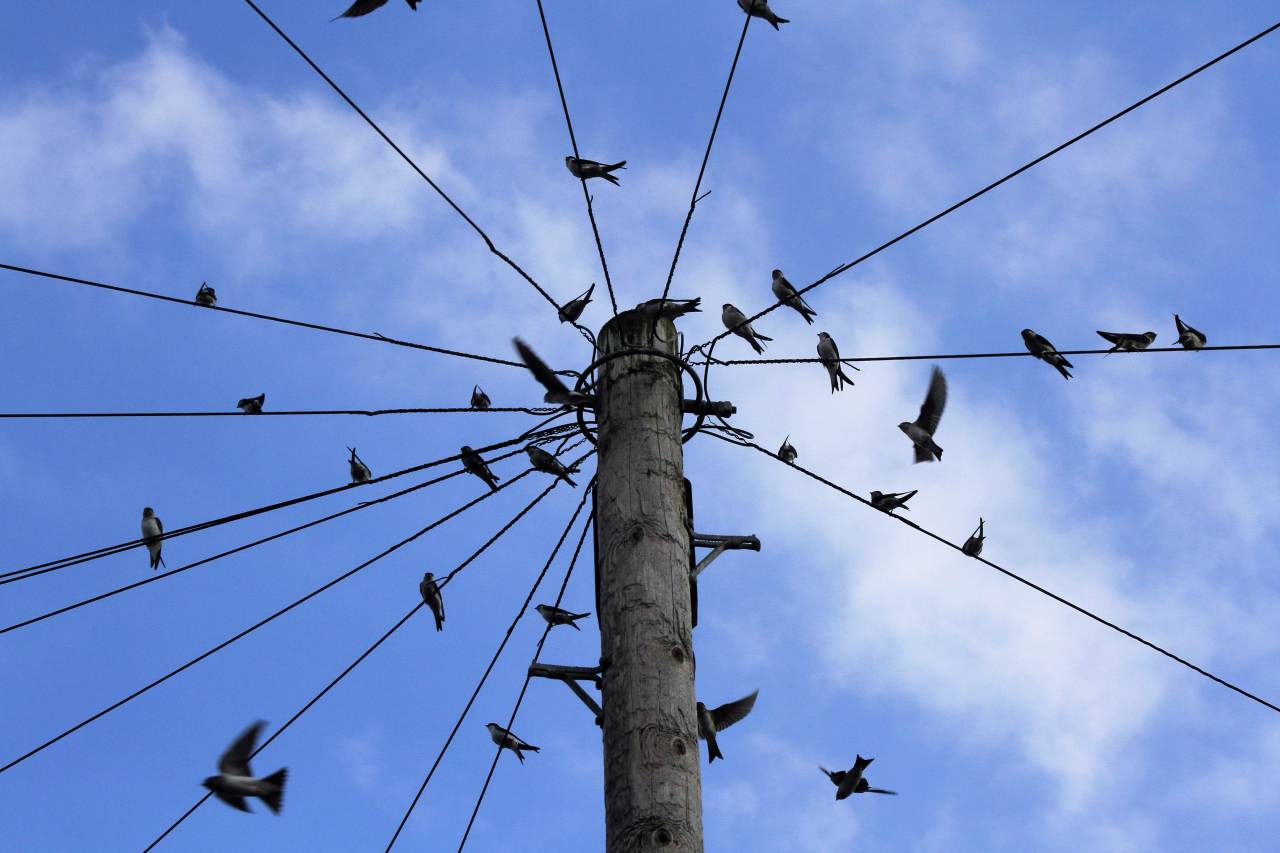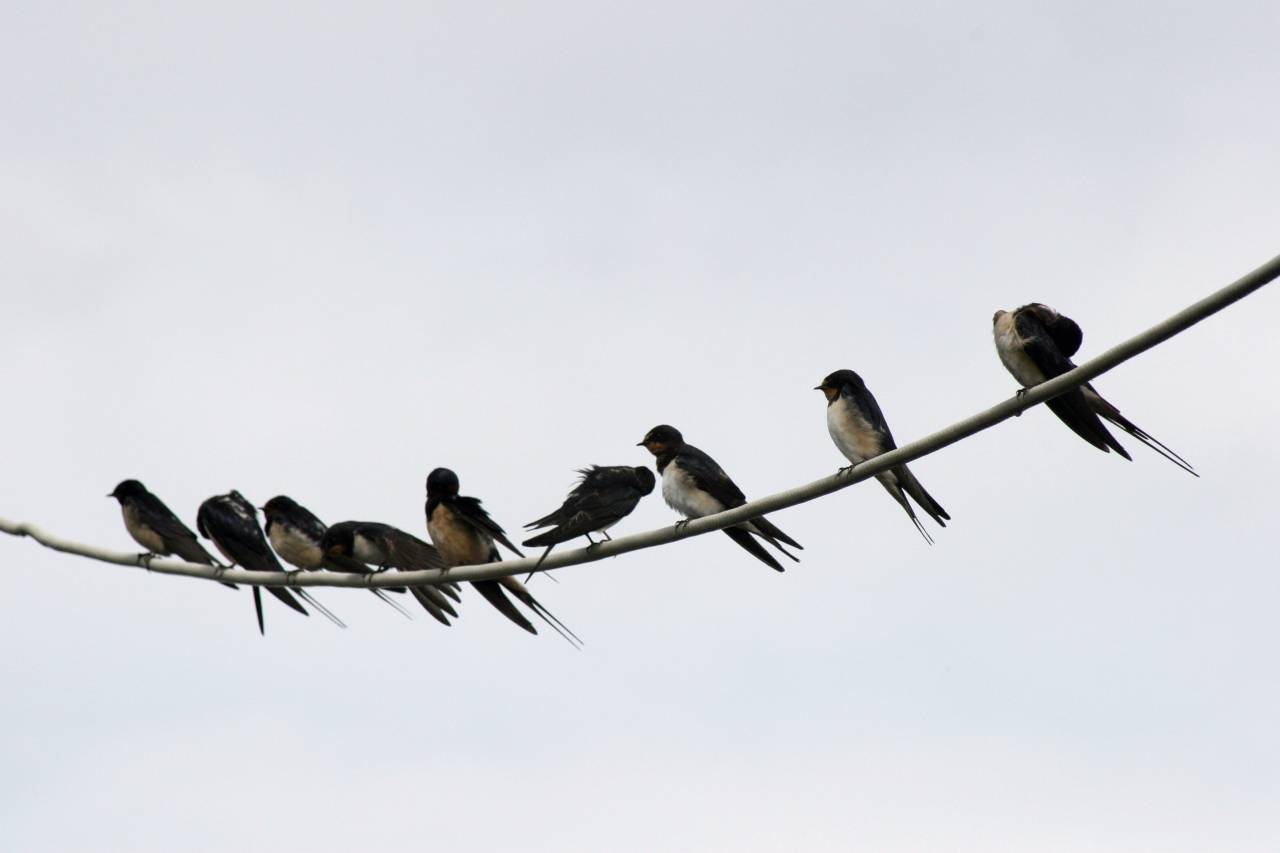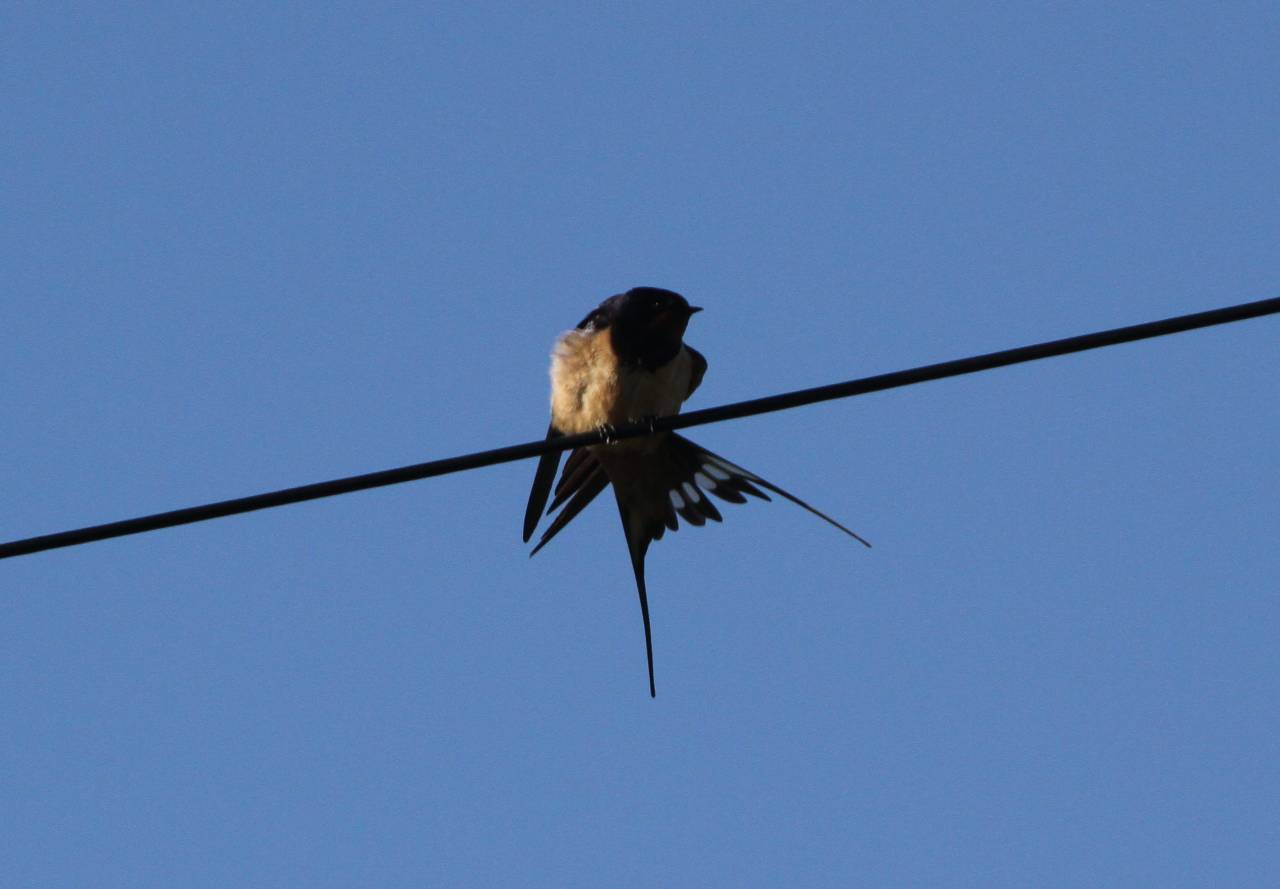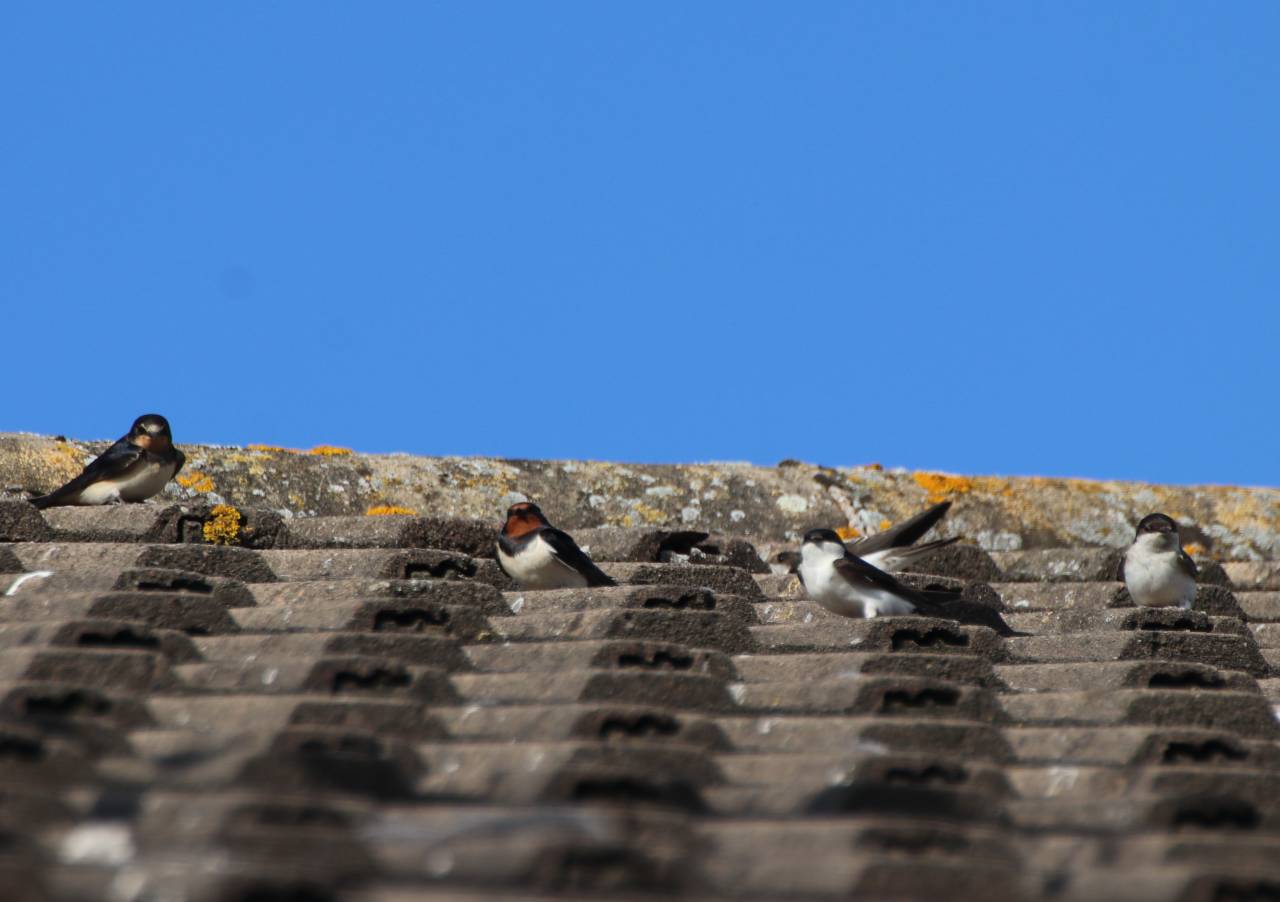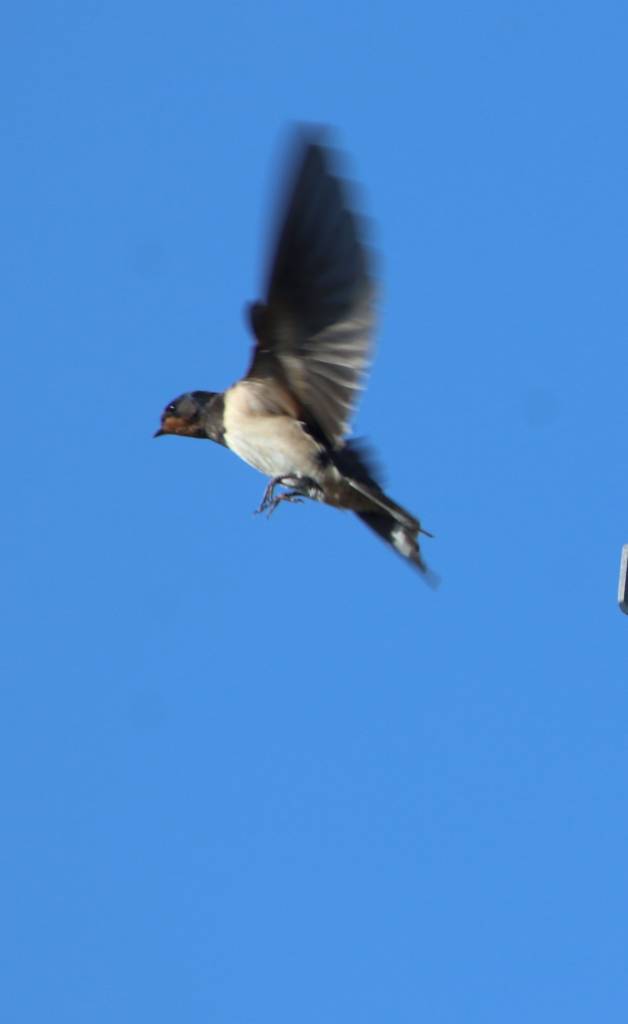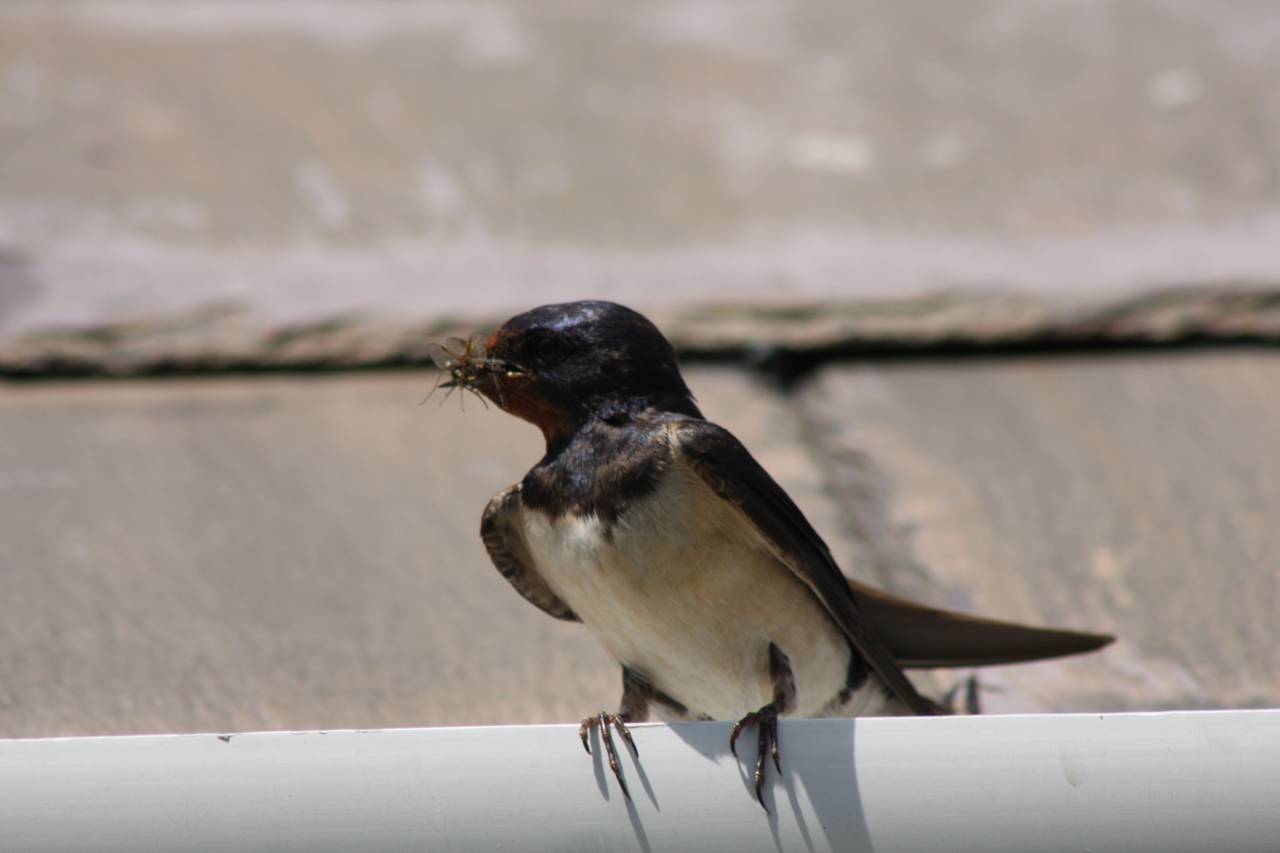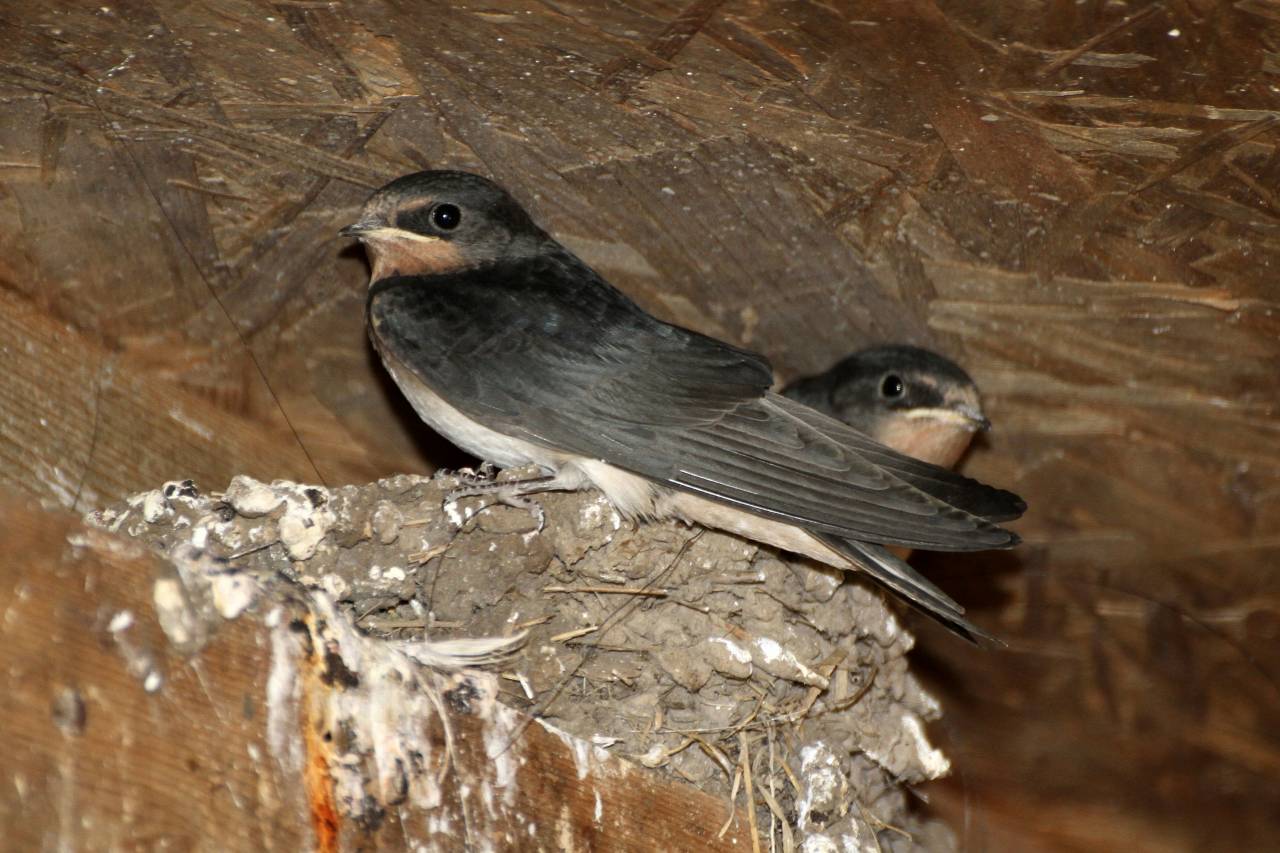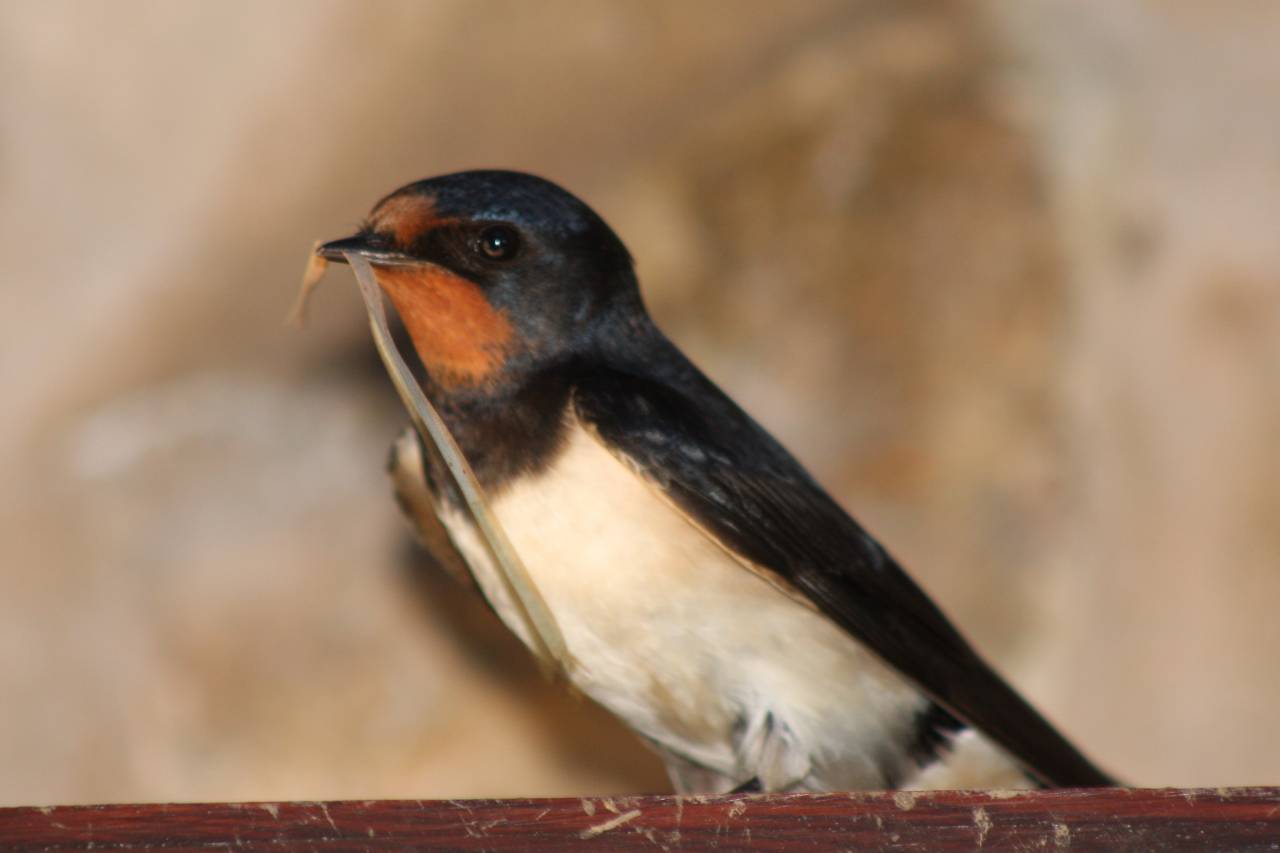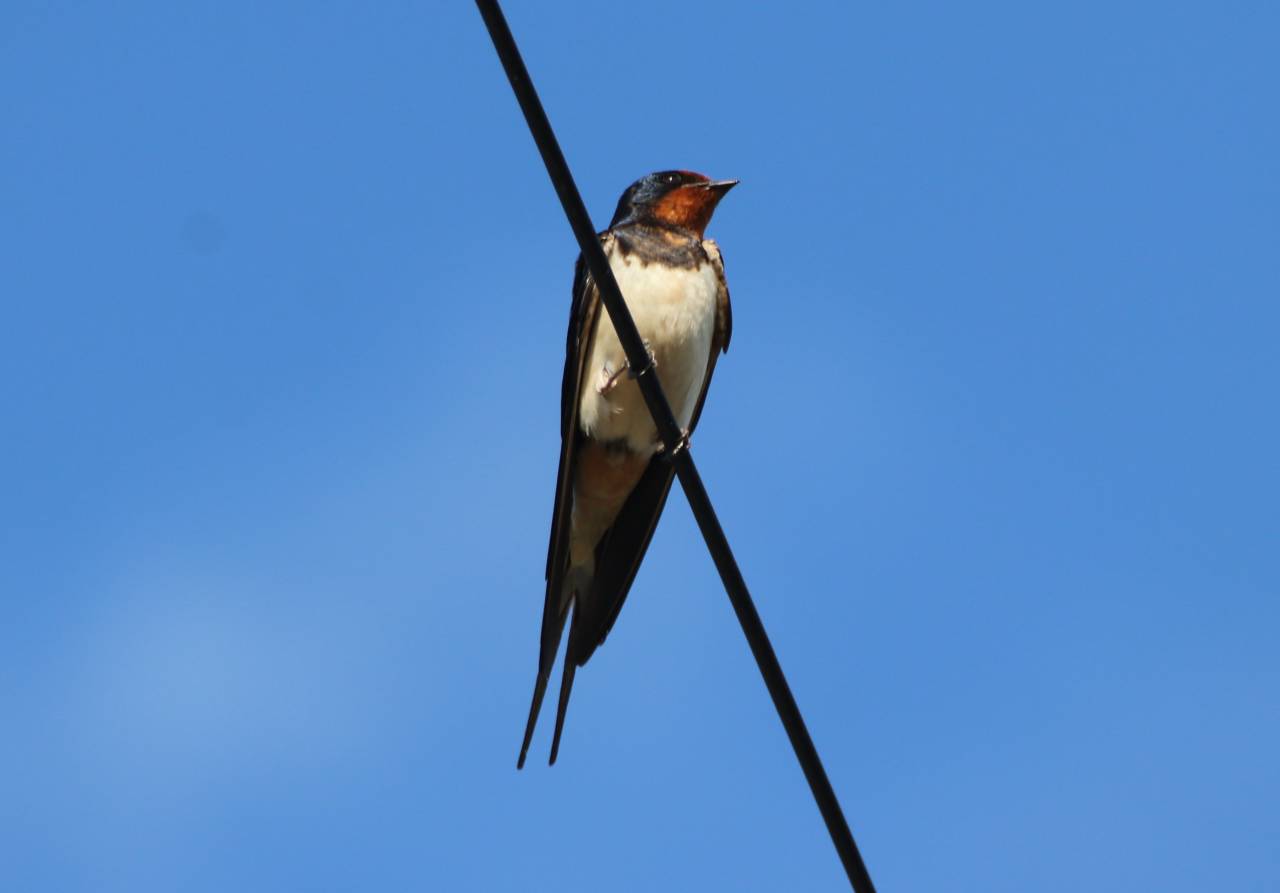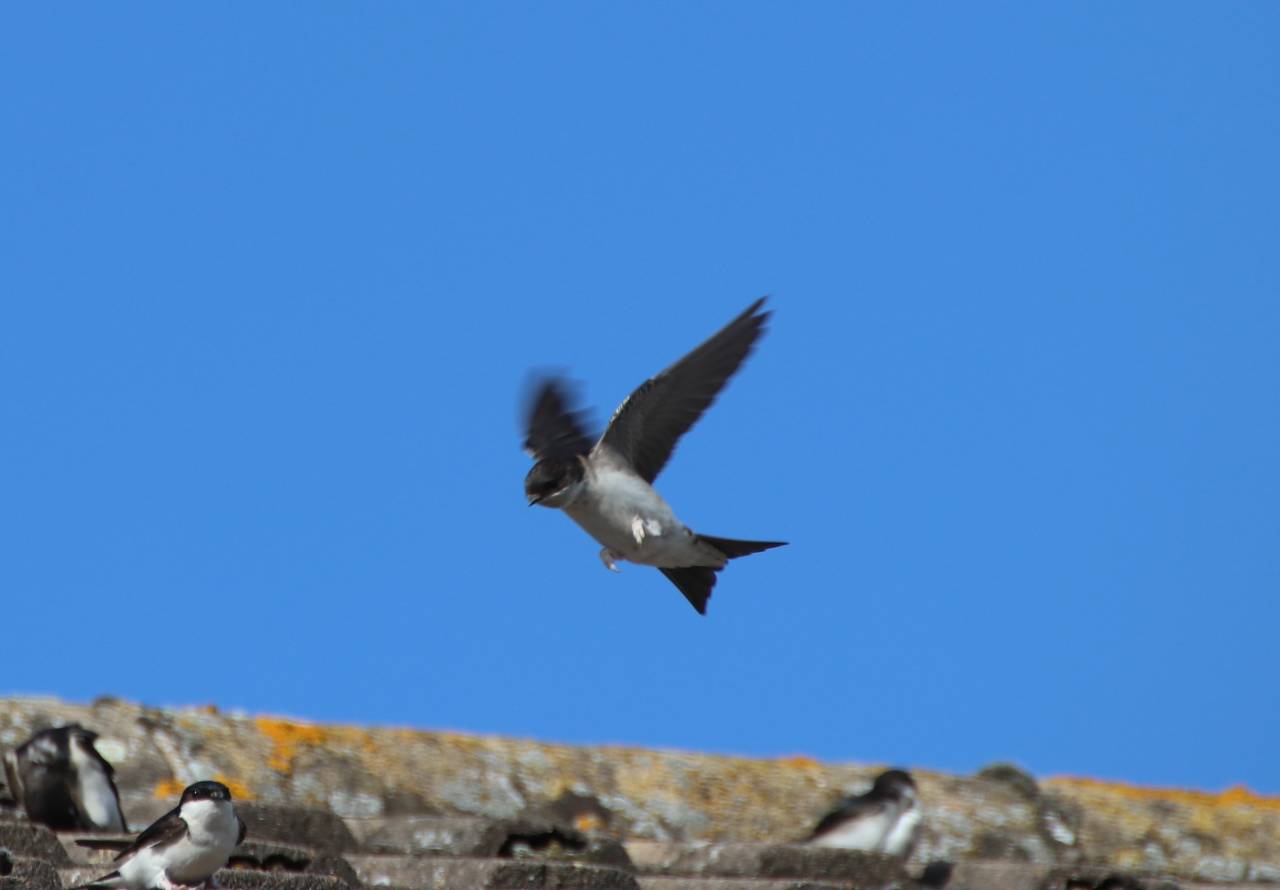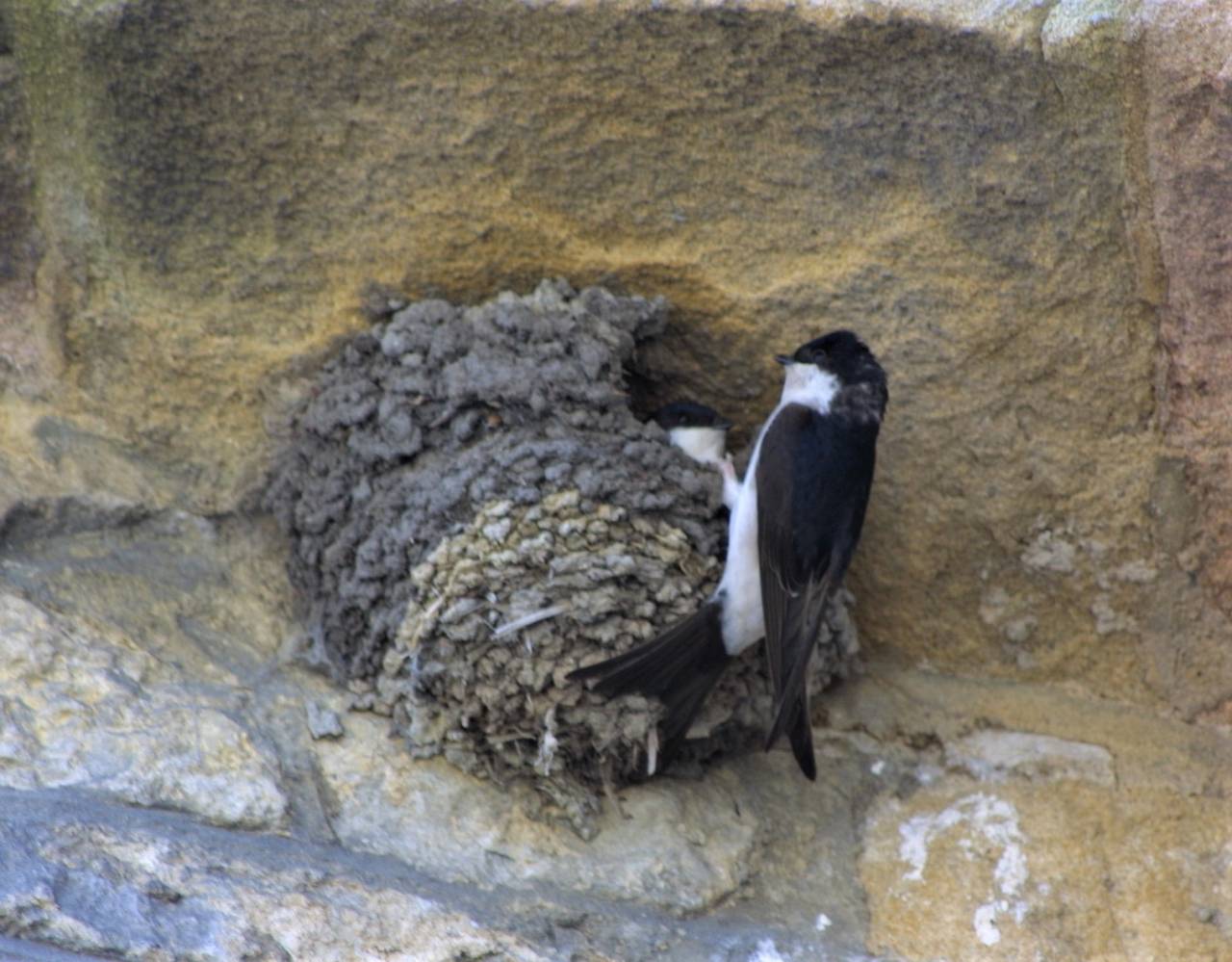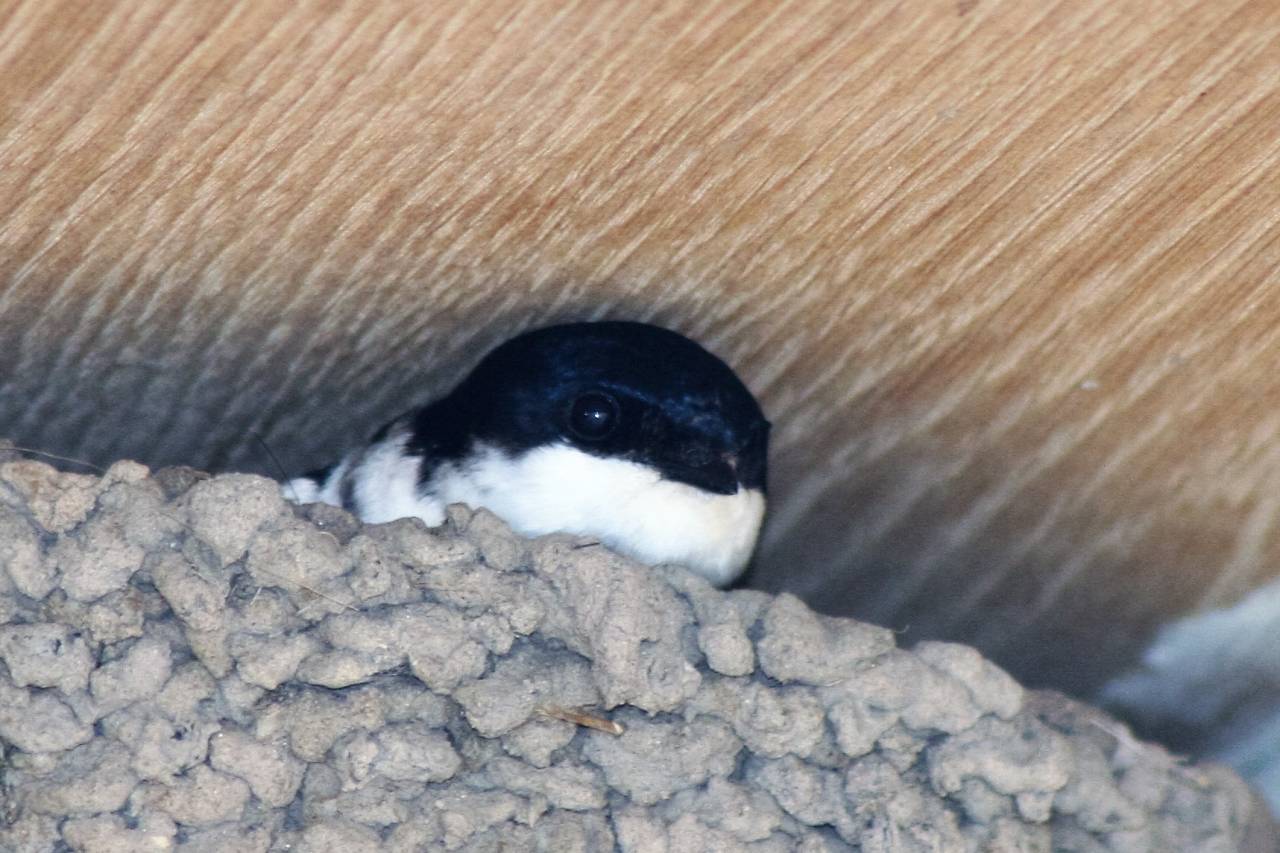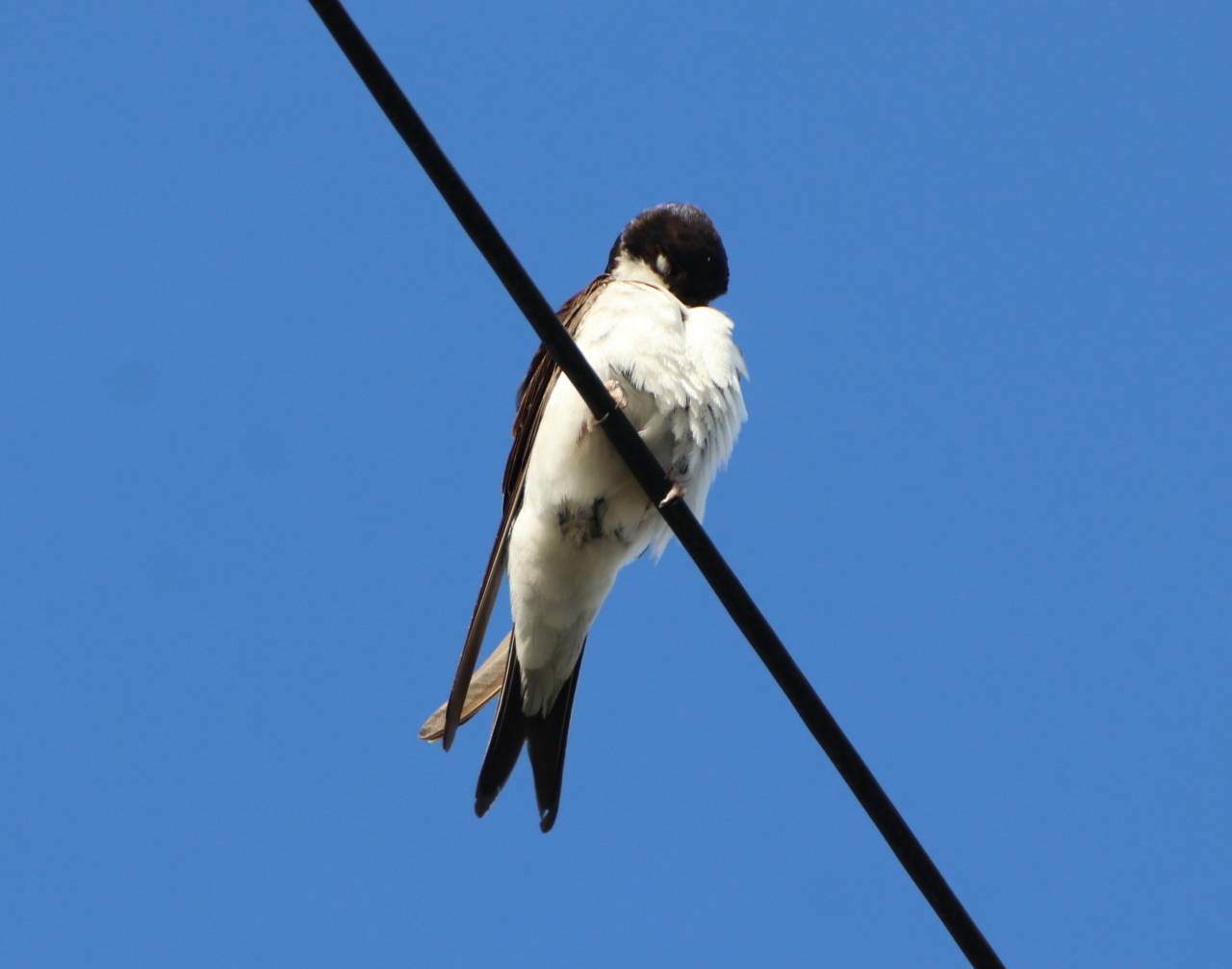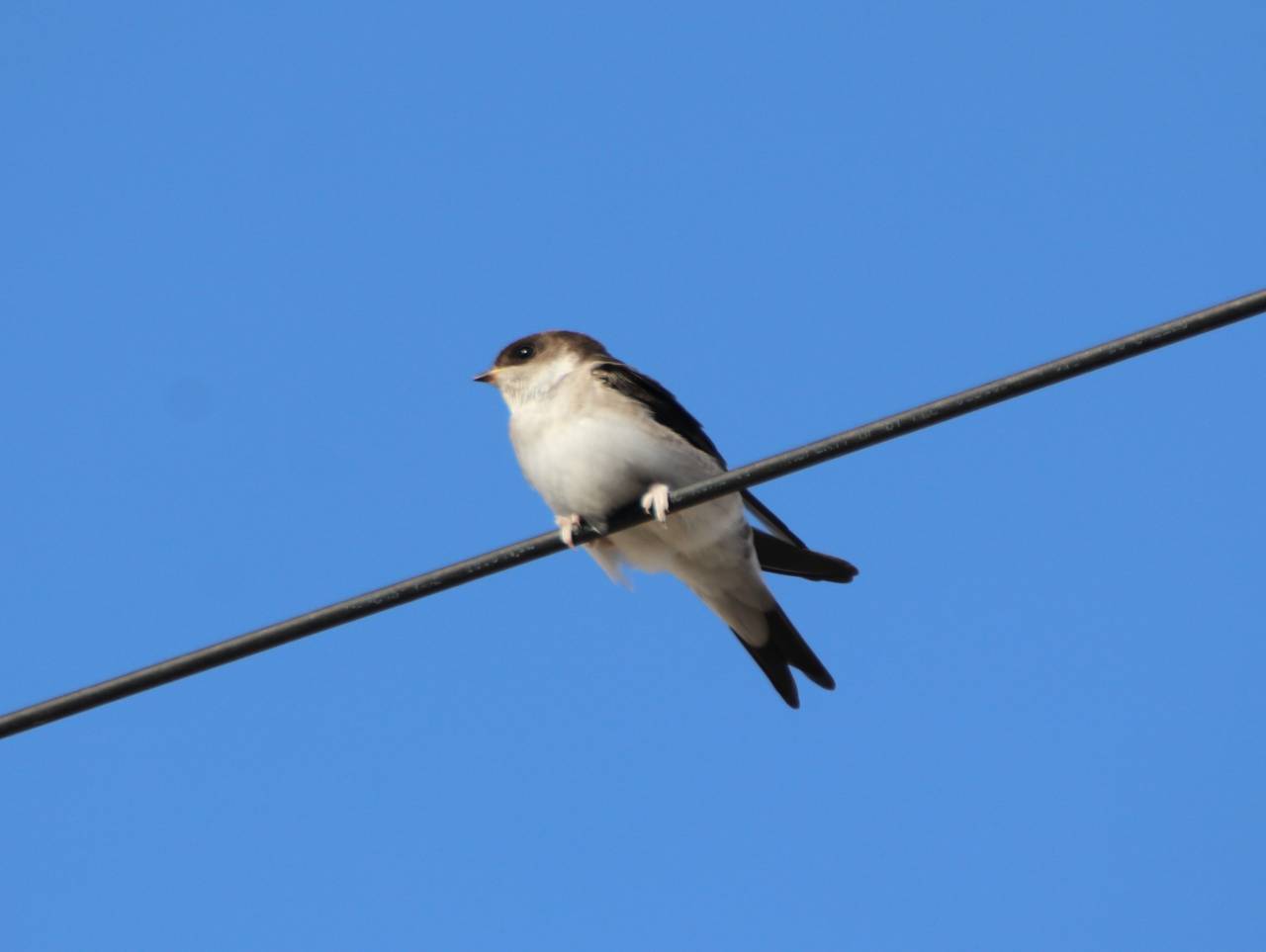

At the end of what has been an extraordinary summer of really hot weather combined with very heavy rainfall, our much loved summer visitors, barn swallows and house martins prepare to make their long journeys south back to the African continent. Many years ago, possibly in the late 1960,s I heard that a bird ringing programme was carried out at The Pit at Little Heath by ringers from the British Trust for Ornithology. Several of the swallows ringed at Christleton were later caught and examined in an area south of Johannesburg in South Africa in the following year. This is a distance of approximately 5,800 miles (9,000km). Just image that journey over land, sea, mountains and desert with all the hazards that might entail. Yet it is also a fact that swallows born in Christleton, will return back to the area in future years, even to their birth nest sites. One nest site that I keep a close eye on always seems to have the first swallows of the year in the village, and this site has been active every year for the last thirty years to my knowledge. This year has been a good year for both species, and although first broods left in mid August, second broods are now gathering ready to fly south. As I write there are still some baby house martins being fed at nest sites on Walk Mill, and feeding is still taking place by swallows over the Pit.
The sight of swallows and house martins gathering at the end of summer is a regular occurrence outside our house, and at the beginning of September I took most of the photographs illustrating this article. The adults and young were feeding on insects over the canal and on the roof of our house, before flying onto the telephone wires. This gathering involved up to 100 individual birds, and they were very happy to sit and pose for the camera, before being disturbed by a passing car or a dog walker. Although both species look similar to most people, there are distinct differences. The swallows plumage is black on their back but with very white underside, and they have a distinct patch of russet red under their chins. They also have long streamer like tails, which is more pronounced in adult birds. House martins are slightly chubbier, but distinctly black and white, and shorter v shaped tails. House martins usually nest in cup shaped nests attached to the underside of roofs as at Walk Mill, or in the case of swallows, open ledges on wooden buildings or in barns. One of the best sites in the Parish is at Cotton Farm where the farm buildings play host to large numbers of swallows and house martins. Eaton Hall on the Westminster Estate is host to the biggest number of house martins that I’ve ever seen. They can be viewed on the Estate Gardens Open Days during the summer.
Although the beginning of September is the date for the main migratory movement south, some of the later broods will still be here into October, and I guess, with the change of weather, will have an even tougher journey. We look forward to their arrival again next year in late March or April, and just wonder at the stamina and resilience of such small creatures. Yet some do it for many years. Nature is just amazing.

